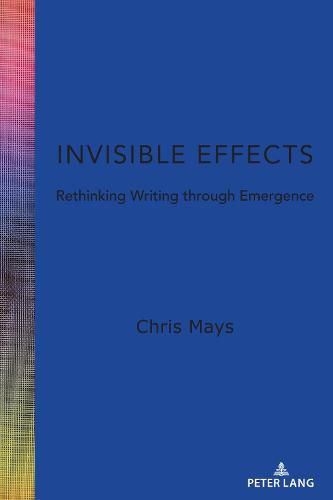Readings Newsletter
Become a Readings Member to make your shopping experience even easier.
Sign in or sign up for free!
You’re not far away from qualifying for FREE standard shipping within Australia
You’ve qualified for FREE standard shipping within Australia
The cart is loading…






This title is printed to order. This book may have been self-published. If so, we cannot guarantee the quality of the content. In the main most books will have gone through the editing process however some may not. We therefore suggest that you be aware of this before ordering this book. If in doubt check either the author or publisher’s details as we are unable to accept any returns unless they are faulty. Please contact us if you have any questions.
Invisible Effects directly engages systems and complexity theory to reveal how the effects of writing and writing instruction work in deferred, disguised, and unexpected ways. The book explains how writing and language that exist in writing systems can indirectly (though powerfully) affect people and environments in sometimes distant contexts. In so doing, the book takes on a question central to rhetoric and writing throughout its long history but perhaps even more pressing today: how do we recognize and measure the effects of writing when those effects are so tangled up with our complex material and discursive environments? The surprisingly powerful effects explored here suggest new ways of thinking about and teaching writing and the applications, lessons, and examples in the text precisely model what this thinking and teaching might look like.
This book is primed to serve as an important addition to reading lists of scholars and graduate students in Writing Studies and Rhetoric and should appear on many syllabi in courses on writing and writing instruction and on rhetoric, both introductory and advanced. As well, the book’s advocacy for the unrecognized potential impact of writing instruction makes it appealing for writing program directors and any potential university faculty, administrators, and non-academics interested in the importance and the efficacy of writing instruction. This book is also a useful resource for scholars and graduate students specializing in Writing Across the Curriculum, as the text provides a useful way to shift the conversation and communicate about writing across disciplines.
$9.00 standard shipping within Australia
FREE standard shipping within Australia for orders over $100.00
Express & International shipping calculated at checkout
This title is printed to order. This book may have been self-published. If so, we cannot guarantee the quality of the content. In the main most books will have gone through the editing process however some may not. We therefore suggest that you be aware of this before ordering this book. If in doubt check either the author or publisher’s details as we are unable to accept any returns unless they are faulty. Please contact us if you have any questions.
Invisible Effects directly engages systems and complexity theory to reveal how the effects of writing and writing instruction work in deferred, disguised, and unexpected ways. The book explains how writing and language that exist in writing systems can indirectly (though powerfully) affect people and environments in sometimes distant contexts. In so doing, the book takes on a question central to rhetoric and writing throughout its long history but perhaps even more pressing today: how do we recognize and measure the effects of writing when those effects are so tangled up with our complex material and discursive environments? The surprisingly powerful effects explored here suggest new ways of thinking about and teaching writing and the applications, lessons, and examples in the text precisely model what this thinking and teaching might look like.
This book is primed to serve as an important addition to reading lists of scholars and graduate students in Writing Studies and Rhetoric and should appear on many syllabi in courses on writing and writing instruction and on rhetoric, both introductory and advanced. As well, the book’s advocacy for the unrecognized potential impact of writing instruction makes it appealing for writing program directors and any potential university faculty, administrators, and non-academics interested in the importance and the efficacy of writing instruction. This book is also a useful resource for scholars and graduate students specializing in Writing Across the Curriculum, as the text provides a useful way to shift the conversation and communicate about writing across disciplines.